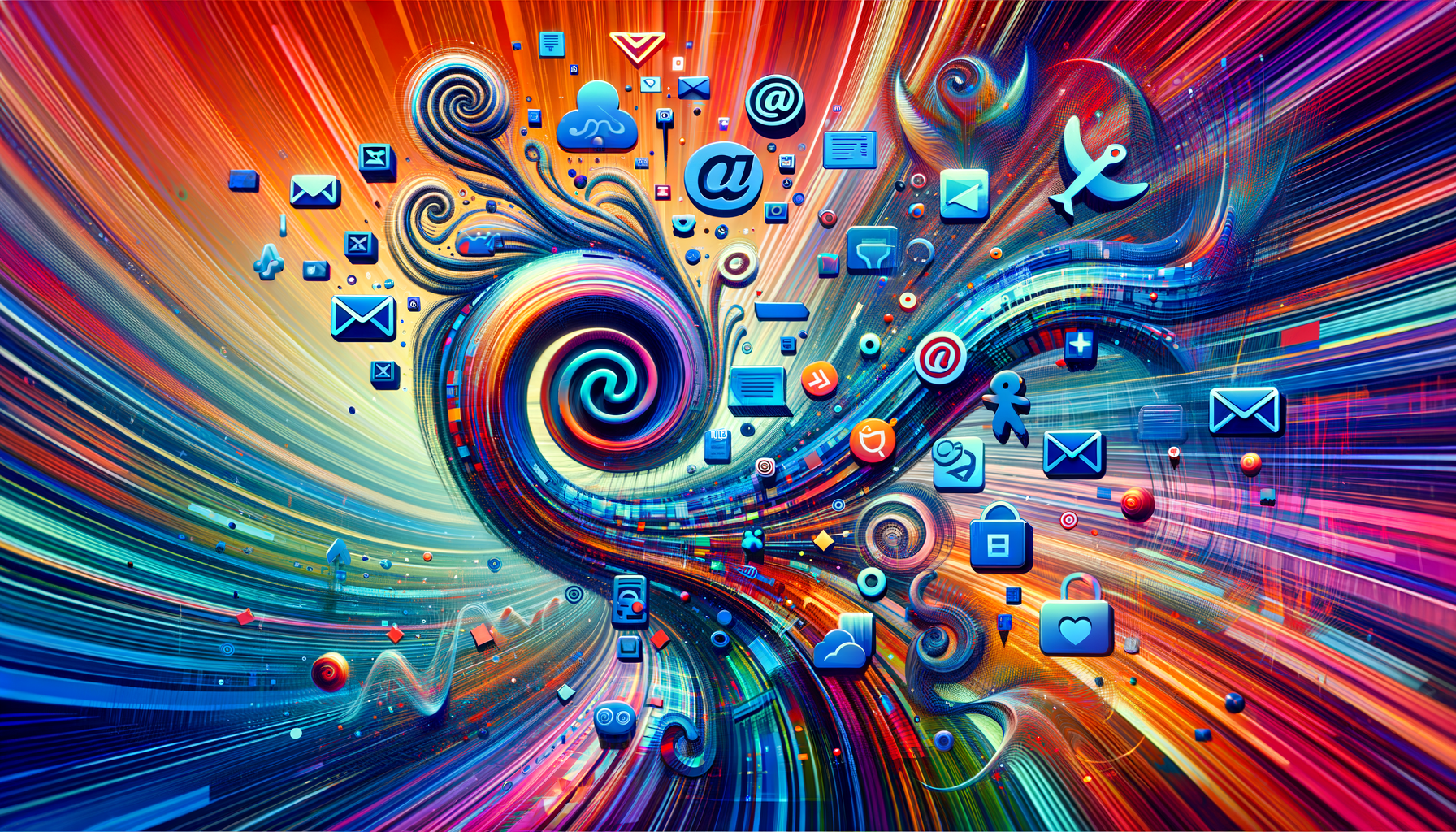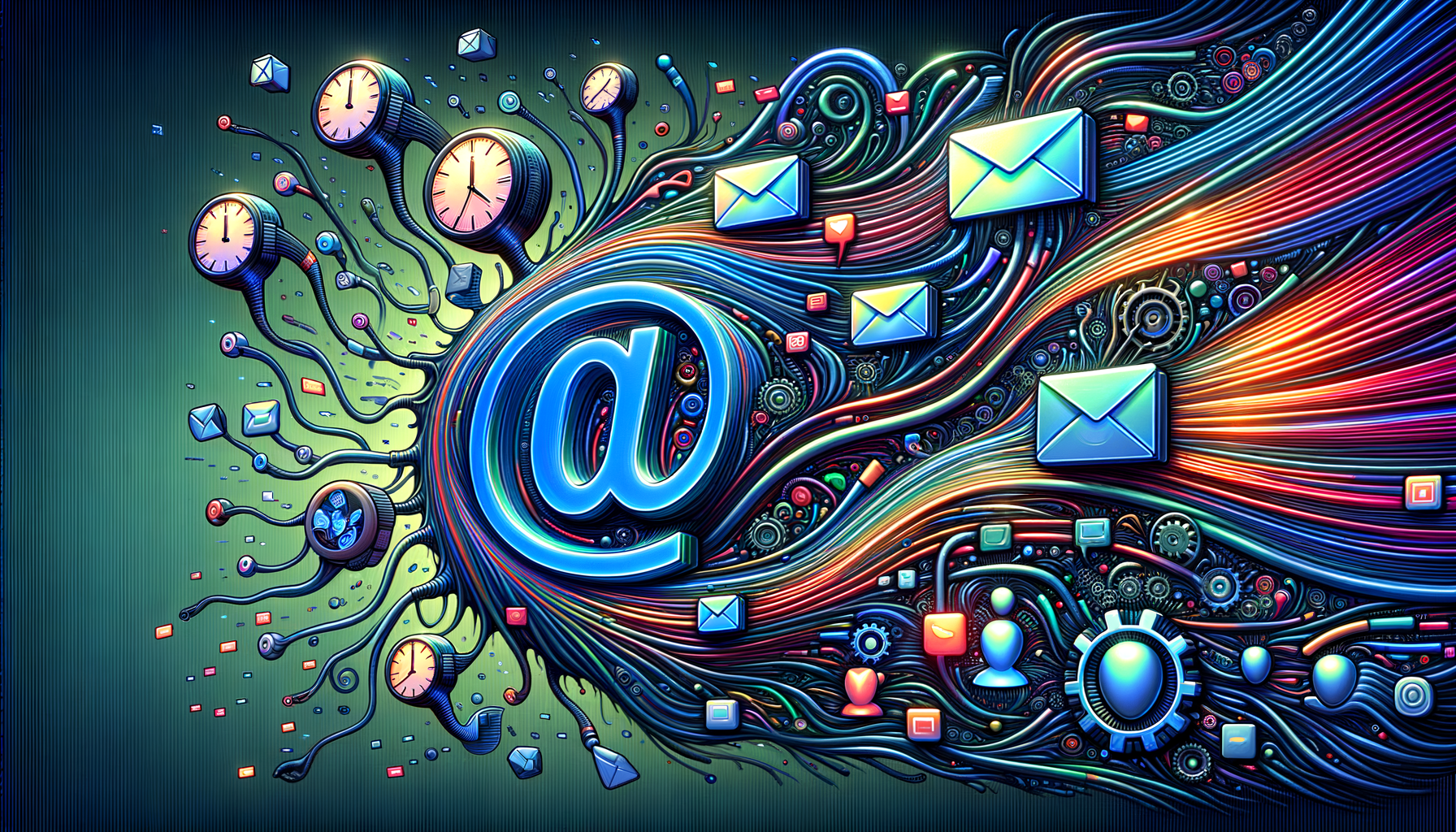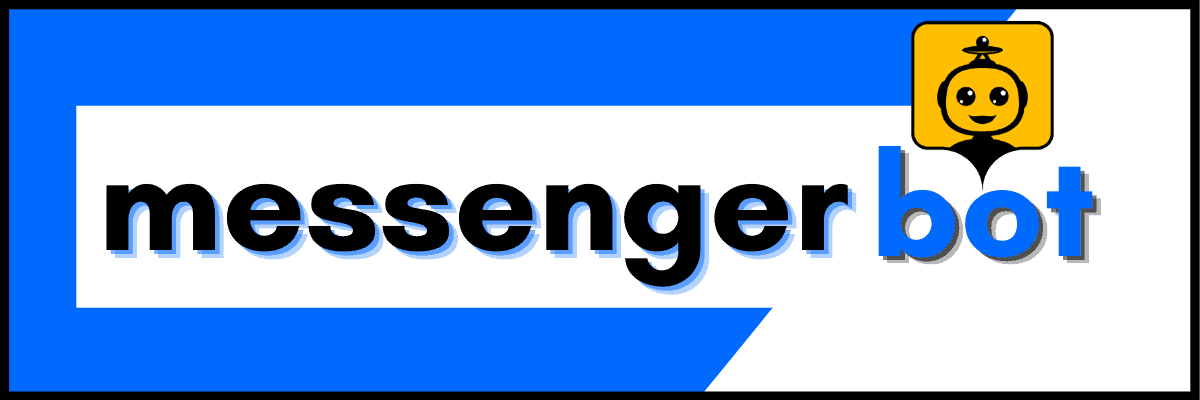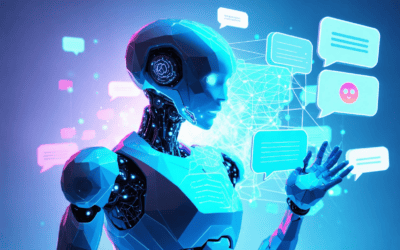In today’s fast-paced digital landscape, maximizing email efficiency is crucial for businesses and individuals alike. Enter chatbot email integration, a game-changing solution that’s revolutionizing how we manage our inboxes. By seamlessly blending artificial intelligence with email platforms like Gmail and Outlook, chatbots are transforming routine tasks into streamlined processes. This article explores top-notch chatbot examples and integration strategies, showcasing how these AI-powered assistants can automate responses, compose emails, and even send messages on your behalf. From free chatbot email integration options to advanced AI-driven solutions, we’ll delve into the best practices and tools that are setting new standards in email productivity. Whether you’re curious about ChatGPT’s email capabilities or seeking the perfect AI bot for your email workflow, this comprehensive guide will equip you with the knowledge to harness the full potential of chatbot email integration.
I. Enhancing Email Productivity with Chatbots
In today’s fast-paced digital landscape, businesses are constantly seeking innovative ways to streamline their communication processes and boost productivity. One of the most exciting developments in this arena is the integration of chatbots with email systems. This powerful combination is revolutionizing the way we manage our inboxes and interact with customers.
A. Can a chatbot send emails?
Absolutely! Chatbots can indeed send emails, offering a powerful integration of conversational AI and email marketing. This capability enhances customer engagement and streamlines communication processes. Here’s how chatbots facilitate email sending:
1. Automated Triggers: Chatbots can be programmed to send emails based on specific user actions or events. For example:
– Welcome emails upon user sign-up
– Order confirmations after purchases
– Follow-up messages after customer service interactions
2. Personalization: Advanced chatbots utilize natural language processing (NLP) to analyze user preferences and tailor email content accordingly, improving relevance and open rates.
3. Lead Nurturing: Chatbots can qualify leads through conversations and automatically send targeted emails to nurture potential customers through the sales funnel.
4. Appointment Scheduling: Chatbots can send email confirmations and reminders for appointments booked during chat interactions.
5. Customer Support: They can email detailed solutions or documentation following chat-based support sessions.
6. Feedback Collection: Chatbots can trigger post-interaction surveys via email to gather valuable customer feedback.
7. Re-engagement Campaigns: Based on user behavior, chatbots can initiate email campaigns to re-engage dormant customers.
8. Data Collection and CRM Integration: Chatbots can collect user data during conversations and send this information via email to update CRM systems.
9. Multi-channel Communication: Chatbots can offer users the option to receive information via email if they prefer this over chat.
10. Compliance and Opt-ins: Sophisticated chatbots can manage email opt-ins and ensure compliance with regulations like GDPR.
According to a study by Drift, 27% of adults are ready to purchase basic goods through a chatbot. This integration of chatbots with email marketing can significantly enhance customer experience and boost conversion rates.
At Messenger Bot, we’ve harnessed this technology to provide businesses with a powerful tool for automating their email communications. Our AI-driven chatbots can seamlessly integrate with your existing email systems, allowing for efficient and personalized email interactions.
B. Benefits of chatbot email integration
The integration of chatbots with email systems offers numerous benefits that can significantly enhance your business operations:
1. Time Savings: Chatbots can handle routine email tasks, freeing up your team to focus on more complex issues. This automation can lead to substantial time savings, especially for businesses dealing with high email volumes.
2. 24/7 Availability: Unlike human staff, chatbots can send emails at any time of day or night, ensuring prompt responses to customer inquiries regardless of time zones or business hours.
3. Consistency in Communication: Chatbots deliver consistent messaging across all email interactions, maintaining brand voice and reducing the risk of human error.
4. Scalability: As your business grows, chatbots can easily handle increased email volumes without the need for additional human resources.
5. Improved Customer Experience: By providing quick, personalized responses, chatbot email integration can significantly enhance customer satisfaction and loyalty.
6. Data-Driven Insights: Chatbots can collect and analyze data from email interactions, providing valuable insights into customer behavior and preferences.
7. Reduced Operational Costs: By automating email tasks, businesses can reduce the need for large customer service teams, leading to significant cost savings.
8. Increased Conversion Rates: Personalized, timely emails sent by chatbots can lead to higher engagement and conversion rates.
9. Seamless Integration with CRM Systems: Many chatbot solutions, including our Messenger Bot platform, can integrate with popular CRM systems, ensuring all customer interactions are properly logged and tracked.
10. Multi-Language Support: Advanced chatbots can send emails in multiple languages, helping businesses expand their global reach.
By leveraging chatbot examples and implementing good chatbot practices, businesses can create a more efficient and effective email communication strategy. As chatbot technology continues to evolve, we can expect even more sophisticated email integration capabilities in the future.
At Messenger Bot, we’re committed to staying at the forefront of these developments, continually enhancing our platform to provide the best possible chatbot solutions for our clients’ email needs. Whether you’re looking to streamline your customer support, boost your marketing efforts, or simply manage your inbox more efficiently, chatbot email integration offers a powerful solution.

II. Gmail Chatbot Integration
At Messenger Bot, we understand the importance of seamless email integration for businesses looking to enhance their productivity and customer engagement. Gmail, being one of the most widely used email platforms, offers excellent opportunities for chatbot integration. Let’s explore how you can leverage this powerful combination to streamline your email workflows.
A. How to integrate chatbot in Gmail?
Integrating a chatbot with Gmail can significantly enhance your email management capabilities. Here’s a step-by-step guide to help you set up a chatbot in Gmail:
1. Choose a chatbot platform: Select a service that offers Gmail integration. While there are several options available, we recommend our Messenger Bot platform for its robust features and seamless integration capabilities.
2. Set up your chatbot: Use our intuitive interface to create and configure your chatbot, defining intents, entities, and responses tailored to your business needs.
3. Enable Gmail API: Navigate to the Google Cloud Console, create a new project, and enable the Gmail API for your account.
4. Obtain API credentials: Generate OAuth 2.0 credentials (client ID and client secret) for your chatbot application.
5. Configure webhook: Set up a webhook in our Messenger Bot platform to receive incoming messages from Gmail.
6. Implement Gmail integration: Utilize the Gmail API and our SDK to connect your chatbot to Gmail seamlessly.
7. Create email triggers: Define specific email conditions (e.g., subject lines, sender addresses) that will activate your chatbot.
8. Test the integration: Send test emails to ensure your chatbot responds correctly within Gmail.
9. Monitor and refine: Regularly analyze chatbot performance and user interactions to improve its functionality and responses.
10. Comply with data protection: Our platform ensures your chatbot adheres to privacy regulations like GDPR when handling email data.
By following these steps, you can create a powerful chatbot that enhances your Gmail experience, automates routine tasks, and provides quick responses to common inquiries. This integration can significantly improve your team’s efficiency and response times.
B. Free chatbot email integration options for Gmail
While premium solutions offer advanced features, there are several free chatbot email integration options available for Gmail users. These tools can provide a great starting point for businesses looking to explore the benefits of chatbot integration without a significant upfront investment.
1. Google Apps Script: This free, built-in tool allows you to create custom functions and automate tasks within Gmail. While it requires some coding knowledge, it’s a powerful option for creating basic chatbot functionalities.
2. IFTTT (If This Then That): This free web-based service allows you to create simple chains of conditional statements, called applets, which can automate email responses based on specific triggers.
3. Zapier: While Zapier offers paid plans, their free tier allows for basic integrations between Gmail and various chatbot platforms, enabling simple automated workflows.
4. Dialogflow Essentials: Google’s Dialogflow offers a free tier that includes basic chatbot creation tools and limited integrations with Gmail.
5. MobileMonkey: This platform offers a free plan that includes basic chatbot features and limited email integrations.
While these free options can be a good starting point, they often come with limitations in terms of functionality, customization, and the number of interactions allowed. For businesses serious about leveraging the full potential of chatbot email integration, investing in a more robust solution like our Messenger Bot platform can provide significant long-term benefits.
Our platform offers a range of chatbot examples and templates specifically designed for email integration, making it easy to get started with sophisticated email automation. From customer service chatbots that can handle common inquiries to sales bots that can qualify leads directly from email interactions, we provide a comprehensive solution for businesses of all sizes.
Moreover, our platform goes beyond simple email responses. We offer advanced features like natural language processing, multi-language support, and integration with CRM systems, allowing you to create truly intelligent and context-aware email interactions.
As you explore chatbot email integration options for Gmail, consider the long-term scalability and advanced features that will support your business growth. While free options can be a good starting point, investing in a comprehensive solution like Messenger Bot can provide the robust functionality and support needed to truly transform your email communications.
III. Outlook Chatbot Integration
At Messenger Bot, we understand the importance of seamless integration across various email platforms. While we specialize in providing top-notch chatbot solutions, we recognize that many businesses rely on Microsoft Outlook for their email communication. Let’s explore how you can integrate chatbots with Outlook to enhance your productivity and streamline your email workflows.
A. How to integrate chatbot in Outlook?
Integrating a chatbot with Microsoft Outlook can significantly improve your email management and automate routine tasks. Here’s a step-by-step guide to help you set up a chatbot in Outlook:
1. Choose a compatible chatbot platform: Select a service that offers Outlook integration. While our Messenger Bot platform is primarily designed for social media and website integration, there are several options available for Outlook, such as Microsoft Power Virtual Agents, MobileMonkey, or Botpress.
2. Install the Outlook Bot add-in: Download and install the Outlook Bot add-in from the Microsoft AppSource. This add-in will allow your chatbot to interact with Outlook’s features.
3. Configure your chatbot: Use your chosen platform’s interface to create and configure your chatbot, defining intents, entities, and responses tailored to your business needs.
4. Connect the chatbot to Outlook: Utilize the provided API keys or integration tools to link your chatbot with Outlook. This step may vary depending on the platform you’re using.
5. Set up app workflows: Define how the chatbot interacts with Outlook features, such as calendar scheduling or email management. This ensures your chatbot can perform the desired tasks within Outlook.
6. Implement natural language processing (NLP): Enhance your chatbot’s ability to understand and respond to user queries effectively. This is crucial for providing a seamless user experience.
7. Customize appearance and behavior: Align your chatbot’s look and feel with your organization’s branding and communication style to maintain consistency.
8. Train your chatbot: Feed it with frequently asked questions and common scenarios to improve its efficiency in handling user queries.
9. Enable multi-language support: If your organization operates internationally, ensure your chatbot can communicate in multiple languages to cater to a diverse user base.
10. Implement security measures: Protect sensitive data exchanged through the chatbot by setting up appropriate security protocols.
11. Set up analytics and monitoring: Use tools to track your chatbot’s performance and user engagement, allowing you to make data-driven improvements.
12. Launch and refine: Start with a controlled rollout, gather user feedback, and continuously refine your chatbot’s responses and capabilities for optimal performance.
By following these steps, you can create a powerful chatbot that enhances your Outlook experience, automates routine tasks, and provides quick responses to common inquiries. This integration can significantly improve your team’s efficiency and response times.
B. Best chatbot email integration solutions for Outlook
While our Messenger Bot platform excels in social media and website chatbot solutions, we acknowledge that there are several excellent options specifically designed for Outlook integration. Here are some of the best chatbot email integration solutions for Outlook:
1. Microsoft Power Virtual Agents: As part of the Microsoft ecosystem, Power Virtual Agents offers seamless integration with Outlook. It provides a no-code platform for creating and deploying AI-powered chatbots that can handle a wide range of email-related tasks.
2. MobileMonkey: Known for its versatile chatbot solutions, MobileMonkey offers Outlook integration capabilities. Their platform allows for the creation of chatbots that can manage emails, schedule appointments, and provide instant responses to common queries.
3. Botpress: This open-source chatbot platform provides robust Outlook integration options. It offers advanced natural language processing capabilities and a flexible architecture that can be customized to suit specific business needs.
4. Acobot: Specializing in AI-powered chatbots, Acobot offers integration with Outlook to automate email responses and streamline communication workflows.
5. Chatfuel: While primarily known for its Facebook Messenger bots, Chatfuel also offers solutions for email integration, including Outlook. Their user-friendly interface makes it easy to create and deploy chatbots for email management.
6. Botsify: This platform provides chatbot solutions that can be integrated with Outlook, offering features like automated email responses, appointment scheduling, and lead generation.
When choosing a chatbot solution for Outlook, consider factors such as ease of integration, customization options, natural language processing capabilities, and scalability. While these platforms offer excellent Outlook integration, it’s worth noting that our Messenger Bot solution provides unparalleled capabilities for social media and website chatbot integration, which can complement your email communication strategy.
For businesses looking to create a comprehensive communication ecosystem, combining our Messenger Bot platform for social media and website interactions with a dedicated Outlook chatbot solution can provide a powerful, multi-channel approach to customer engagement and internal communication efficiency.
Remember, the key to successful chatbot integration lies not just in the technology, but in how well it’s implemented to meet your specific business needs. Whichever solution you choose, ensure it aligns with your communication goals and provides value to both your team and your customers.
IV. AI-Powered Email Assistants
At Messenger Bot, we’re constantly exploring innovative ways to enhance communication efficiency. While our primary focus is on social media and website chatbot solutions, we recognize the growing importance of AI-powered email assistants in streamlining email management. Let’s delve into the world of AI email assistants and explore how they’re revolutionizing the way we handle our inboxes.
A. What is the best chatbot for writing emails?
The best chatbot for writing emails depends on your specific needs and preferences. While our Messenger Bot platform excels in social media automation, we acknowledge several outstanding AI-powered tools that are specifically designed for email composition:
1. ChatGPT: This versatile AI model offers exceptional email composition capabilities with its advanced natural language understanding. It can generate context-aware emails for various purposes, from professional correspondence to creative marketing content.
2. Jasper AI: Specializing in marketing-focused emails, Jasper AI provides customizable templates that can help craft compelling email campaigns. Its ability to understand brand voice makes it a favorite among marketers.
3. Copy.ai: Known for its user-friendly interface, Copy.ai offers a wide range of email templates and styles. It’s particularly useful for those who need to create diverse email content quickly.
4. Writesonic: This platform features email-specific templates and allows for tone adjustments, making it ideal for businesses that need to maintain a consistent brand voice across various email types.
5. Grammarly: While primarily known for its grammar checking capabilities, Grammarly also offers writing assistance that can significantly improve email quality and professionalism.
6. Rytr: Offering email templates for various industries, Rytr is a versatile tool that can help create everything from sales pitches to customer support responses.
7. Flowrite: Focused on professional email writing, Flowrite provides context-aware suggestions that can help streamline business communication.
8. Lavender: This tool integrates directly with email clients, making it particularly useful for sales professionals who need to craft personalized, effective emails.
9. Persado: Utilizing data-driven insights, Persado is excellent for optimizing marketing emails and improving engagement rates.
10. Phrasee: Specializing in subject lines and email body optimization, Phrasee is a powerful tool for marketers looking to boost open rates and conversions.
When selecting an AI email assistant, consider factors such as integration capabilities, customization options, and your specific email writing needs. While these tools excel in email composition, remember that our Messenger Bot platform offers unparalleled capabilities for social media automation and website chatbots, which can complement your email marketing strategy for a comprehensive communication approach.
B. Chat bot examples for email composition
While our Messenger Bot specializes in social media and website interactions, we recognize the value of chatbots in email composition. Here are some practical examples of how AI-powered chatbots can assist in crafting various types of emails:
1. Welcome Emails:
A chatbot can generate personalized welcome emails for new subscribers or customers. For example:
“Subject: Welcome to [Company Name]!
Hello [Customer Name],
We’re thrilled to have you on board! As a welcome gift, enjoy 15% off your first purchase with code WELCOME15. Explore our latest collection at [website link].
Best regards,
[Your Name]”
2. Follow-up Emails:
AI can create timely follow-up emails after a customer interaction or purchase:
“Subject: How was your recent purchase?
Hi [Customer Name],
We hope you’re enjoying your recent purchase from [Company Name]. We’d love to hear your thoughts! Could you spare a moment to leave a review?
[Review Link]
Your feedback helps us improve and assists other customers.
Thank you,
[Your Name]”
3. Promotional Emails:
Chatbots can craft engaging promotional emails for sales or new product launches:
“Subject: Exclusive 48-Hour Sale – Don’t Miss Out!
Dear [Customer Name],
Our biggest sale of the year is here! For the next 48 hours, enjoy up to 50% off on all items. Plus, free shipping on orders over $50.
Shop now: [Sale Link]
Happy shopping!
[Your Name]”
4. Customer Support Emails:
AI can assist in drafting quick responses to common customer inquiries:
“Subject: Re: Order Status Inquiry
Hello [Customer Name],
Thank you for your inquiry about order #12345. I’m pleased to inform you that your package has been shipped and is expected to arrive on [Date]. You can track your package using this link: [Tracking Link].
If you need any further assistance, please don’t hesitate to ask.
Best regards,
[Support Team Member]”
5. Newsletter Emails:
Chatbots can help create engaging newsletter content:
“Subject: [Month] Newsletter – What’s New at [Company Name]
Dear [Subscriber Name],
We hope this newsletter finds you well. Here’s what’s new this month:
– [New Product/Service Announcement]
– [Upcoming Event Details]
– [Featured Blog Post]
– [Customer Spotlight]
Read more on our blog: [Blog Link]
Stay tuned for more updates!
Best wishes,
[Your Name]”
These examples demonstrate how AI-powered chatbots can streamline email composition across various scenarios. While these tools excel in email tasks, our Messenger Bot platform offers powerful features for social media automation and website engagement, complementing your email strategy for a comprehensive communication approach.
By leveraging AI for email composition and our Messenger Bot for social media and website interactions, businesses can create a cohesive, efficient communication strategy across multiple channels. This integrated approach can significantly enhance customer engagement, streamline operations, and drive business growth.

V. ChatGPT and Email Management
At Messenger Bot, we’re always exploring innovative ways to enhance communication efficiency. While our primary focus is on social media and website chatbot solutions, we recognize the growing importance of AI in email management. Let’s dive into how ChatGPT is revolutionizing email tasks and how it can complement our services.
A. Can ChatGPT send emails?
ChatGPT itself cannot directly send emails, but it can be integrated with email platforms to streamline your email communication process. By leveraging OpenAI’s GPT models in conjunction with automation tools like Zapier, users can create powerful email assistants that not only draft emails but also send them through connected email services.
Here’s how you can harness AI for email tasks:
1. Custom GPT Integration: Develop a tailored GPT model within ChatGPT that specializes in email composition, adhering to your specific tone and style preferences.
2. Zapier Connection: Utilize Zapier’s extensive app library (6,000+ integrations) to link your custom GPT with email providers such as Gmail, Outlook, or other SMTP servers.
3. Automated Workflow: Create a Zapier “Zap” that triggers email sending based on GPT-generated content, enabling a seamless transition from AI-written text to actual email dispatch.
4. Content Generation: Use the GPT model to craft email bodies, subject lines, and even personalized content based on recipient data or predefined templates.
5. Scheduling and Timing: Implement AI-driven logic to determine optimal sending times for improved email open rates and engagement.
6. Follow-up Management: Program your AI assistant to track responses and generate appropriate follow-up emails automatically.
7. Data Analysis: Leverage AI capabilities to analyze email performance metrics and suggest improvements for future communications.
While ChatGPT enhances the email creation process, it’s crucial to maintain human oversight for sensitive or critical communications. This AI-human collaboration ensures the benefits of automation without compromising on the nuanced judgment often required in professional correspondence.
For implementation, consult OpenAI’s API documentation and Zapier’s integration guides. Always adhere to data privacy regulations and email marketing best practices when deploying AI-assisted email solutions.
B. Zapier ChatGPT chatbot integration for email tasks
At Messenger Bot, we understand the power of automation in streamlining communication processes. While our primary focus is on social media and website chatbots, we recognize the value of integrating ChatGPT with Zapier for email tasks. Here’s how you can leverage this powerful combination to enhance your email workflow:
1. Set Up ChatGPT API:
First, obtain API access to ChatGPT through OpenAI. This allows you to interact with the model programmatically.
2. Create a Zapier Account:
If you haven’t already, sign up for a Zapier account. Zapier offers various pricing tiers, including a free plan for basic integrations.
3. Connect ChatGPT to Zapier:
Use Zapier’s OpenAI integration to connect your ChatGPT API. This step allows Zapier to send prompts to ChatGPT and receive responses.
4. Choose Your Email Service:
Connect your preferred email service (e.g., Gmail, Outlook) to Zapier. This integration enables Zapier to send emails on your behalf.
5. Create a Zap:
Design a workflow (Zap) that triggers ChatGPT to generate email content based on specific criteria, then sends the email through your connected email service.
Example Zap for Automated Customer Inquiries:
Trigger: New form submission or customer inquiry
Action 1: Send inquiry details to ChatGPT for response generation
Action 2: Review and approve the generated response (optional human oversight)
Action 3: Send the approved response via email
6. Implement Email Templates:
Create email templates in ChatGPT for common scenarios like welcome emails, follow-ups, or support responses. Use these as a base for ChatGPT to customize for each recipient.
7. Personalization with Dynamic Fields:
Utilize Zapier’s ability to pass dynamic information to ChatGPT. This allows for personalized email content based on recipient data, inquiry details, or other relevant information.
8. Set Up Email Scheduling:
Use Zapier’s delay actions to schedule emails at optimal times, improving open rates and engagement.
9. Implement Feedback Loops:
Create Zaps that analyze email responses and feed this information back to ChatGPT, allowing it to refine and improve future email content.
10. Compliance and Privacy:
Ensure your Zaps comply with data protection regulations. Implement checks to prevent sensitive information from being processed without proper safeguards.
While this integration can significantly streamline email tasks, it’s important to maintain a balance between automation and personal touch. Regular monitoring and fine-tuning of your Zaps will ensure optimal performance and maintain the quality of your email communications.
Remember, while ChatGPT and Zapier offer powerful email automation capabilities, our Messenger Bot platform excels in social media and website interactions. By combining these tools, you can create a comprehensive communication strategy that covers all your digital touchpoints efficiently.
For businesses looking to enhance their overall digital communication strategy, consider integrating our Messenger Bot solutions with your ChatGPT-Zapier email workflow. This combination can provide a seamless, AI-powered communication experience across multiple channels, from social media to email and beyond.
VI. Automated Email Response Systems
At Messenger Bot, we recognize the importance of efficient email management in today’s fast-paced business environment. While our primary focus is on social media and website chatbot solutions, we understand that many businesses are looking to integrate AI-powered systems across all communication channels, including email.
A. What is the AI bot that responds to emails?
AI bots that respond to emails are sophisticated software applications designed to automate email communication. These systems use natural language processing (NLP) and machine learning algorithms to understand incoming emails, generate appropriate responses, and manage email workflows efficiently. Here’s a comparison of some leading AI email responders:
AI Email Responders Comparison
| AI Bot | Key Features | Best For | Pricing |
|——–|————–|———-|———|
| GPT-3 | Natural language processing, Customizable responses | Large enterprises, Developers | Pay-per-use model |
| Reply.io | Automated follow-ups, A/B testing | Sales teams, Marketers | From $70/month |
| Jasper | AI-powered content creation, Email templates | Content marketers, Bloggers | From $49/month |
| Drift | Conversational AI, Real-time personalization | B2B companies, Customer support | Custom pricing |
| Grammarly | Grammar checking, Tone adjustment | Writers, Professionals | Free to $30/month |
| Crystal | Personality detection, Communication style matching | Salespeople, Recruiters | From $29/month |
| Smartwriter.ai | Personalized cold emails, LinkedIn integration | B2B sales, Lead generation | From $49/month |
| Phrasee | AI-powered subject lines, Brand voice consistency | E-commerce, Large-scale email campaigns | Custom pricing |
| Persado | Emotional language optimization, Cross-channel consistency | Enterprise marketing teams | Custom pricing |
| Seventh Sense | Send time optimization, Engagement prediction | Email marketers, HubSpot/Marketo users | From $100/month |
While these AI bots offer impressive capabilities, it’s important to note that the “best” solution depends on your specific needs and use case. For instance, GPT-3’s versatility makes it suitable for complex, customized implementations, while tools like Reply.io or Smartwriter.ai might be more appropriate for sales-focused teams.
At Messenger Bot, we believe in the power of AI to enhance communication across all channels. While we specialize in social media and website chatbots, many of the principles we apply in our solutions can be extended to email communication as well. The key is to choose a system that aligns with your business goals, integrates well with your existing tech stack, and provides a seamless experience for your customers.
B. Chatbot conversation examples in email contexts
To illustrate how AI-powered chatbots can enhance email communication, let’s explore some practical examples of chatbot conversations in email contexts. These examples demonstrate how AI can streamline various aspects of email management, from customer support to sales follow-ups.
1. Customer Support Inquiry:
User: “I haven’t received my order yet. Can you help?”
Chatbot: “I’m sorry to hear that. Could you please provide your order number? I’ll check its status right away.”
User: “My order number is #12345.”
Chatbot: “Thank you. I’ve checked your order #12345. It was shipped yesterday and is expected to arrive within 2-3 business days. Would you like me to send you the tracking information?”
2. Sales Follow-up:
Chatbot: “Hello! I noticed you recently viewed our premium software package. Do you have any questions I can help with?”
User: “Yes, I’m wondering about the pricing for a team of 10.”
Chatbot: “Great question! For a team of 10, our premium package is priced at $499/month. This includes unlimited users, 24/7 support, and all premium features. Would you like me to arrange a demo for you?”
3. Appointment Scheduling:
User: “I need to reschedule my appointment with Dr. Smith.”
Chatbot: “Certainly! I can help you reschedule. Dr. Smith has the following available slots this week: Tuesday at 2 PM, Thursday at 11 AM, and Friday at 4 PM. Which one works best for you?”
User: “Thursday at 11 AM would be perfect.”
Chatbot: “Excellent! I’ve rescheduled your appointment with Dr. Smith for Thursday at 11 AM. You’ll receive a confirmation email shortly. Is there anything else I can assist you with?”
4. Product Inquiry:
User: “Do you have the XYZ model in stock?”
Chatbot: “Let me check that for you. Yes, we currently have the XYZ model in stock in red and blue colors. Which color are you interested in?”
User: “I’d like the blue one.”
Chatbot: “Great choice! The blue XYZ model is available for immediate shipping. Would you like me to add it to your cart?”
5. Feedback Collection:
Chatbot: “We hope you’re enjoying your recent purchase. On a scale of 1-10, how likely are you to recommend our product to a friend?”
User: “I’d say 8.”
Chatbot: “Thank you for your feedback! We’re glad you’re satisfied. Is there anything specific you particularly liked or any areas where we could improve?”
These examples showcase how AI-powered chatbots can handle a variety of email-based interactions efficiently and professionally. By implementing similar conversational flows, businesses can significantly improve their email response times, customer satisfaction, and overall operational efficiency.
At Messenger Bot, while we specialize in social media and website chatbot solutions, we recognize the value of extending AI-powered conversations to email contexts. The principles of natural language processing and conversational AI that we apply in our solutions can be adapted to create equally effective email chatbots.
For businesses looking to implement comprehensive AI-powered communication strategies across multiple channels, including email, social media, and websites, we recommend exploring integrated solutions. Our free trial offer allows you to experience firsthand how AI can transform your customer interactions across various platforms.
VII. Implementing Chatbots in Email Workflows
At Messenger Bot, we understand the importance of seamless communication across all channels. While our primary focus is on social media and website chatbots, we recognize the value of integrating chatbots into email workflows. This integration can significantly enhance productivity and improve customer experience.
A. AI chatbot integration best practices
Implementing AI chatbots in email workflows requires careful planning and execution. Here are some best practices to ensure successful integration:
1. Define Clear Objectives: Identify specific goals for your chatbot, such as reducing response times, automating routine inquiries, or improving lead qualification. This clarity will guide your implementation strategy.
2. Personalize Interactions: Utilize data from your CRM and email history to personalize chatbot responses. This approach enhances the user experience and increases engagement.
3. Seamless Handoff to Human Agents: Ensure your chatbot can smoothly transition complex queries to human agents when necessary. This maintains the quality of customer service.
4. Continuous Learning and Improvement: Implement machine learning algorithms that allow your chatbot to learn from interactions and improve over time. Regular updates based on user feedback are crucial.
5. Maintain Brand Voice: Ensure your chatbot’s language and tone align with your brand identity. Consistency across all communication channels is key to building trust.
6. Provide Clear Opt-Out Options: Always give users the option to switch to human support if they prefer. This respects user preferences and maintains a positive experience.
7. Implement Strong Security Measures: Protect user data and ensure compliance with relevant regulations like GDPR. Security should be a top priority in all chatbot interactions.
8. Use Natural Language Processing (NLP): Implement advanced NLP to understand context and intent, allowing for more accurate and helpful responses.
9. Offer Multilingual Support: If your audience is global, consider implementing multilingual capabilities to cater to a diverse user base.
10. Integrate with Existing Systems: Ensure your chatbot can integrate seamlessly with your existing email platforms and CRM systems for efficient data management.
By following these best practices, you can create a chatbot that enhances your email workflows, improves customer satisfaction, and boosts overall productivity. At Messenger Bot, we apply similar principles in our social media and website chatbot solutions, ensuring seamless integration and optimal performance across all communication channels.
B. Good chatbot examples for email automation
To illustrate the potential of chatbots in email automation, let’s explore some effective examples that showcase how AI can streamline various email-related tasks:
1. Welcome Series Automation:
A chatbot can trigger a personalized welcome email series for new subscribers. It can analyze user data to tailor the content, sending relevant information based on the user’s interests or behavior.
Example:
User: Signs up for newsletter
Chatbot: Sends a series of welcome emails:
– Day 1: “Welcome to [Brand]! Here’s what to expect…”
– Day 3: “Explore our top products based on your interests…”
– Day 7: “Exclusive offer for new subscribers: 15% off your first purchase!”
2. Order Confirmation and Tracking:
Chatbots can automate order confirmations and provide real-time tracking updates, reducing the load on customer service teams.
Example:
User: “Where is my order?”
Chatbot: “Your order #12345 was shipped yesterday. It’s currently in transit and expected to arrive on [date]. Would you like me to send you the tracking link?”
3. Appointment Scheduling and Reminders:
AI chatbots can handle appointment scheduling via email, send reminders, and manage rescheduling requests.
Example:
Chatbot: “Your appointment with Dr. Smith is tomorrow at 2 PM. Would you like me to add it to your calendar?”
User: “Yes, please.”
Chatbot: “Great! I’ve added it to your calendar. Is there anything else you need?”
4. Lead Qualification:
Chatbots can qualify leads by asking relevant questions via email, ensuring that sales teams focus on the most promising prospects.
Example:
Chatbot: “Thanks for your interest in our enterprise solution. To help us serve you better, could you tell us the size of your company?”
User: “We have about 500 employees.”
Chatbot: “Thank you. Based on your company size, I recommend our ‘Business Pro’ package. Would you like to schedule a demo with one of our sales representatives?”
5. Feedback Collection:
After a purchase or interaction, chatbots can automatically send emails to collect feedback, improving customer satisfaction and product development.
Example:
Chatbot: “We hope you’re enjoying your new [Product]. On a scale of 1-10, how likely are you to recommend it to a friend?”
User: “8”
Chatbot: “Great to hear! Is there anything specific you particularly like or any areas where we could improve?”
6. Content Recommendation:
AI-powered chatbots can analyze user behavior and send personalized content recommendations via email.
Example:
Chatbot: “Based on your recent purchases, we think you might enjoy our new article on [Topic]. Would you like me to send it to you?”
User: “Yes, please.”
Chatbot: “Great! I’ve sent the article to your inbox. Enjoy reading!”
These examples demonstrate how chatbots can significantly enhance email automation, providing personalized, timely, and efficient communication. At Messenger Bot, while we specialize in social media and website chatbot solutions, we recognize the potential of extending these capabilities to email workflows.
For businesses looking to implement comprehensive AI-powered communication strategies across multiple channels, including email, social media, and websites, we recommend exploring integrated solutions. Our free trial offer allows you to experience firsthand how AI can transform your customer interactions across various platforms.
By leveraging AI chatbots in email automation, businesses can significantly improve their communication efficiency, enhance customer experience, and drive better results. As we continue to innovate in the field of AI-powered communication, we’re excited about the possibilities that lie ahead in integrating chatbots across all customer touchpoints.




